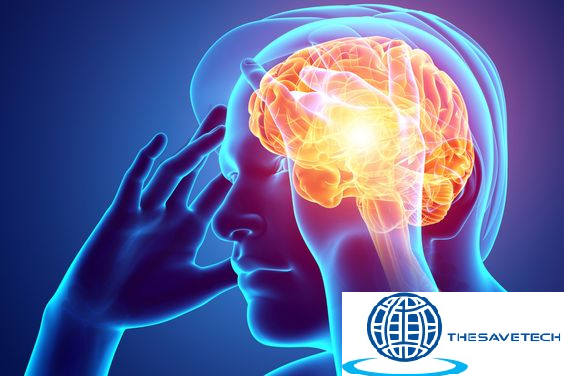In recent years, as the rapid development of technology continues apace, particular keywords or concepts dominate over others, suggesting the evolution of the spheres. That is the explanation as to why the term “CUBVH” has been coming up very often of late. But although the definition of “CUBVH” is perhaps still a work in progress, the idea has begun to permeate the discussions of various industries including artificial intelligence, data science and business transformation.
So, what does “CUBVH” consist actually of? Why is the term so popular in the IT environment and is it reasonable to link its significance to all spheres of human activity?
What is CUBVH?
However, despite the fact that this is a term of quite recent origin, it is said to be a general structure or an idea of designing the connection of the main components of the modern digital innovativeness in one model. Some experts assume that CUBVH is an abbreviation for ‘Computing, Usability, Big Data, Virtualization, and Hyperconnectivity’ the relation of which seems to be embraced in a cloud sweeping over all of them. These are the very elements that help in the pursuit of progress, especially when it comes to artificial intelligence, cloud networks, and the Internet of Things.
However it can be understood in an elaborate way or otherwise, CUBVH is emerging as a strategic pillar in the digital transformation journeys by organizations. The organisations and architects who grasp the meaning of CUBVH and how to integrate it into practice are likely to be the first people in the world market.
The Role of CUBVH in Digital Transformation
The phrase digital transformation is no longer regarded as an empty cliché. It is now an imperative in all businesses. The pandemic has catalysed the transition to digital solutions and many companies had to endure the survival mode. But there is no doubt that the CUBVH emergence can help solve the problem of the digital transformation of a company in a more constructive way.
CUBVH represents the five constituents namely, Computing, Usability, Big Data, Virtualization, and Hyperconnectivity.
Computing: Of all those features available in CUBVH, the most central and most fundamental is computing. In the face of growing complexity and scale of modern data, businesses must adopt any of quantum computing or edge computing, or high performance computing as the latest and the best in processing technologies.
Usability: Modern day digital transformation has many features yet one of the most relevant ones which is often skipped is usability. In the case of CUBVH, emphasis is placed on the requirement to create systems that are not only powerful, but easy to operate too. Advanced technologies will be of no benefits if the end users of such technologies do not embrace them.
Big Data: Data is synthesized into new oil; CUBVH makes it clear that any company looking to succeed in today’s business environment must be able to sustain the collection, storage and analysis of big data. Companies are able through advanced analytics to understand patterns that were previously thought to be beyond reach aiding in decision making processes.
Virtualization: From the implementation standpoint of CUBVH, virtualization technologies from cloud solutions to virtual machines are peripheral. Virtualization paves way for improved operational efficiency and business dynamic scaling so as to enable organizations to quickly respond to fluctuations of the market environment.
Hyperconnectivity: Finally and most intriguingly, CUBVH recognizes hyperconnectivity which is essentially the interconnectedness of devices and systems through the IoT and 5G networks. Hyperconnectivity allows for intercommunication of assets optimizing their usage.
CUBVH in Artificial Intelligence and Machine Learning
CUBVH is best suited for AI and ML among other areas. The AI systems are high-performing and resource-hungry while carrying out certain complex functions that involve analytics on data. In this regard, it is essential to exploit CUBVH as a strategy to advance the use of Artificial Intelligence Technologies by creating the models that are not only functional but also growing and friendly toward the users.
One of the major shortcomings during the development of AI has been the need to optimally balance performance and usability. If a system works under controlled conditions, it often fails to work in practical situations because the management of the processes involved in it or its inputs is complex or poor. With an enhanced focus on usability and big data CUBVH provides the means of doing away with such challenges.
CUBVH also is at the core of the push to make AI available to everyone. Companies with little or no technical knowledge can also apply AI technologies because the design is user-oriented and hyperconnectivity is used. This makes it possible for the use of AI driven solutions in a larger number of industries thereby increasing the pace of the innovation.
CUBVH’s Impact on Cloud Computing and Virtualization
Cloud computing and virtualization have been the kings in the recent decade in astounding the IT infrastructures as well as the running of the Businesses Organization. CUBVH further explains why these businesses should not just adopt any cloud strategy but an agile, expansive and user and data processing oriented cloud computing model.
By utilizing their full potential, virtualization technologies can ensure optimization of resources allocation and costs to run the operations without compromising their capability to handle real time needs. The emphasis on hyperconnectivity within CUBVH also ensures that systems installed in the cloud are fully fused with other cloud and mobile systems enabling business to do more.
Industry Applications of CUBVH
CUBVH has come in handy through the development in all industries, more particularly in healthcare and manufacturing industries.
In the healthcare industry, CUBVH offers novel management of high volumes of demographic abstracts, enriches communication with patients remotely, and enhances the quality of medical studies. By focusing on the socalled “power- 19E65072aio and functional efficiency of the system”, fresh ideas, vision, and solutions, such as artificial intelligence and its application in early diagnosis and planning and treatment processes are more welcomed into the system yielding improved patient outcomes.
In manufacturing businesses, CUBVH is facilitating the transition to smart factories where machines, sensors and employees are incorporated into an IoT ecosystem. Virtualization is also instrumental in this context in that it enables the integration of various simulation approaches and digital twin concepts where the models are developed for the manufacture through planning.
The finance industry is another major area that also benefits from the application of the CUBVH framework. This includes climatic changes, high frequency trading done through modernized computing and hyperconnected banks that offer global transaction systems.
Conclusion: The Future of CUBVH
Though it is an idea in its infancy, CUBVH is being understood as an overall paradigm that incorporates the most significant components of contemporary technology. Be it the cloud or AI, big data or hyperconnectivity, CUBVH has the possibility of transforming entire industries and speeding up progress.
Businesses and innovators that develop a framework based on the principal ideas of the CUBVH structure support the concept of the forthcoming digital transformation, while those that ignore it will probably get lost in the past. Given the rapid development of CUBVH, it is safe to say that it will become an important feature in the future of business, technology, and even global society.
Be it a CEO, IT specialist or a gadget lover lady, everyone should monitor the progress and realization of CUBVH if they want to remain effective in the world that is becoming more and more digital.










